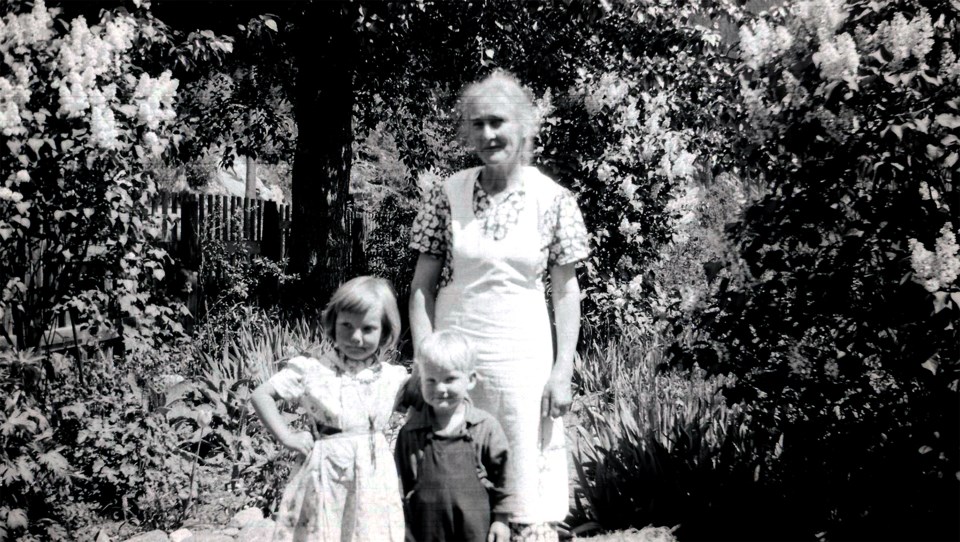A broken bone and accompanying cast are not an uncommon sight in Whistler during any season and are likely to become even more common as the mountains open and we begin another winter. While these days most injuries are treated by medical professionals at the Whistler Health Care Centre, a few stories from our archives show residents of the Alta Lake area, prior to the development of Whistler Mountain, sometimes had to take a more hands-on role in treating themselves.
Louise Betts is the daughter of Jenny Jardine, whose family first came to Alta Lake in 1921 when Thomas Neiland, Jenny’s stepfather, started a logging business. Jenny and her brothers grew up in the area and she married Wallace Betts, who had been working at one of the logging camps in the area, in 1937. Though the couple and their children did later move away from Alta Lake, Louise would often visit her grandmother Lizzie Neiland at her house in what is now Function Junction. A story from one of her visits would make anyone who has a bone set in Whistler today appreciate the care they receive.
Louise and her cousin Alfie were playing in the field near their grandmother’s house. As Louise described it, “We’d go to the top of these little humps and lie down and roll to the bottom.” On one of these rolls, Alfie broke his arm. The pair ran to find Louise’s mother (according to Louise, “I can remember he just came screaming up,”) and Jenny “grabbed him by the shoulder and straightened his arm out. Like that, thank you!”
After creating a splint for his arm, Jenny, Alfie and Louise got on the train (Louise could not remember if it was a passenger or freight, though she thinks they waited for the passenger train) and headed for Vancouver. Luckily for Alfie, the doctors there concluded Jenny had done a good job splinting his arm and after putting a cast on they were able to return to Alta Lake.
Like the Jardine-Neilands, the Kitteringham family also came to the Alta Lake area because of the forestry industry. Olie and Eleanor Kitteringham and their children Ron, Jim, and Linda, lived at Parkhurst from 1948 to 1956 and, unlike many of the people who worked at the mill, stayed at Parkhurst year-round.
With no doctor in the area, Eleanor told her family, “If you are going to get sick it has to be on a Wednesday, Friday or Sunday,” as those were the days when the passenger train came through from Lillooet to Squamish. When Ron was about nine years old, however, he became sick and delirious for three days with a high temperature. Eleanor consulted her “doctor book,” which said it might be bronchial pneumonia, and used the phone in the mill office to call up Dr. Kindree in Squamish and ask that he put some penicillin on the train for her. The penicillin was “thrown off by the next freight at [the] station,” and Ron soon recovered.
Not all of the stories in our archives have such fortunate endings, and accidents at the mill could have life-altering results, as could untreated illnesses. In 1980, Dr. Christine Rodgers and Dr. Rob Burgess both set up practices in Whistler and began seeing patients, providing the first full-time, year-round medical care in Whistler.




